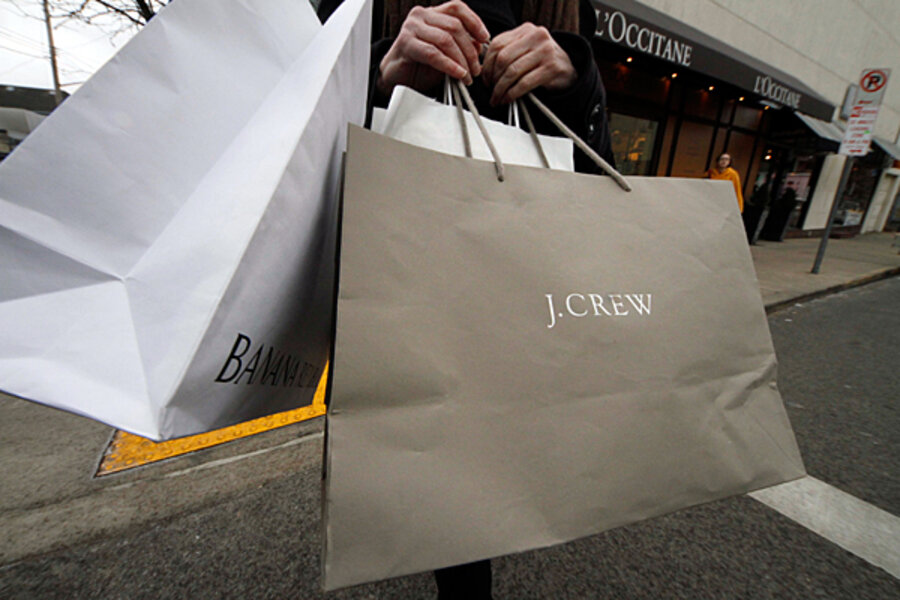Inflation rate: why prices are rising on everything from cornflakes to socks
Loading...
| New York
Inflation creep – especially for food and energy prices – is starting to take hold in the economy.
The Consumer Price Index (CPI) rose 0.4 percent last month, the same increase as in December, the Labor Department reported Thursday. This is the first time the CPI has increased this much for two consecutive months since June and July of 2008.
The core inflation rate, which excludes food and energy prices and is less volatile, rose 0.2 percent in January – the fastest pace since October 2009.
Rising prices have important ramifications for the economy. They take money out of consumers’ wallets to pay for necessities such as food and gasoline. This leaves less money for other purchases that could help boost the economy. Also, inflation is an area watched carefully by the Federal Reserve, which has been able to keep interest rates near zero percent for a long time because inflation has not been a problem.
The main driver behind the higher consumer prices: rising commodity prices. The Producer Price Index, which measures what manufacturers and wholesalers pay for goods, rose 0.8 in January, the Labor Department reported Wednesday.
“There has been a broad range of industrial commodity increases,” says economist Joel Naroff of Naroff Economic Advisors in Holland, Pa. “If you look at the details, it’s pretty eye-opening.”
For example, prices have significantly increased for cotton, many of metals such as copper and tin, and anything made from petroleum, such as plastic goods.
In the recent past, some companies were reluctant to raise prices, concerned that consumers would simply find a less expensive alternative. But as other businesses announce price hikes, Mr. Naroff says, “companies that have been afraid to raise prices seem to think it’s OK to do so.”
Last month, for instance, many airlines started to raise prices because of an increase in jet-fuel prices. Airline-ticket prices rose 2.7 percent in January, the Labor Department says. According to some reports, airlines have hiked prices as many as five times since December to account for the rising fuel prices.
People who drink coffee may notice they are paying more as well. On Thursday, J.M. Smucker Co., based in Orrville, Ohio, said it would hike the price of coffee products another 10 percent after already having increased prices by 13 percent. Smucker owns the brands Folgers Coffee and Dunkin’ Donuts.
Clothes shoppers may also notice that the price of popular items will be higher this spring. Over the past year, cotton prices have doubled, and synthetic prices have gone up about 50 percent. Many companies such as VF Corp., which makes jeans, and Brooks Brothers, which makes dress shirts, plan to raise prices this spring, according to recent media reports.
Even some basics will be more expensive. At the end of January, consumer giant Procter & Gamble, citing its own rising commodity prices, said it will hike prices shortly on toothpaste, shaving products, and soap.
How will these price hikes play out for the Federal Reserve? According to the minutes of its most recent meeting on Jan. 25 and 26, the central bank anticipates that the increase in oil prices will hike consumer prices this year. But the staff of the Fed also thinks this effect will wane in 2012.
The Fed indicated it will continue its low-interest policy for the immediate future.
The Fed has ignored rising energy prices before, points out economist Bob Brusca of Fact & Opinion Economics in New York. In the winter of 2007-08, oil prices spiked to almost $150 a barrel, and consumers had to pay more than $4 a gallon for gasoline.
“The Fed ignored the increases and did not make the recession worse,” says Mr. Brusca.
To handle rising energy prices, some companies are finding they don’t have complete power to raise their prices. On Monday, Delta Air Lines tried to raise prices on business fares by $120 per round trip. However, it scaled back those increases after US Airways decided not to follow suit, according to the Associated Press.
Price increases for services are slowly rising as well. In January for example, education rose in price by 0.6 percent and recreation was up 0.2 percent. Over the past six months, the inflation rate for services is up 1.8 percent, Brusca says. But that won’t bother the Fed, he says, since an increase in the inflation rate for services might translate into an increase in demand for labor.
“It’s where the Fed wants to see inflation. I don’t think the Fed is going to be dissatisfied at all,” he says.





